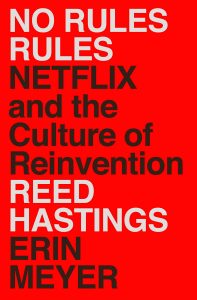
# Key Takeaways:
– The importance of creating a culture of freedom and responsibility in the workplace
– The concept of “radical candor” and the value of honest feedback
– The role of trust and transparency in building a successful organization
– The benefits of a flexible and adaptable approach to management
# Practical Application:
– Encouraging open communication and feedback among team members
– Empowering employees to make decisions and take ownership of their work
– Creating a clear and transparent decision-making process
– Embracing change and being open to new ideas and approaches
# Valuable Insights for Leaders/Managers:
– Chapter 2: “Lead with Context, Not Control”
– highlights the importance of setting clear expectations and goals for employees rather than micromanaging them
– Chapter 4: “Build a Culture of Candor”
– emphasizes the value of honest and direct communication in building a strong team
– Chapter 6: “Paying Adequate Attention to Hiring”
– discusses the importance of hiring the right people and creating a diverse and inclusive team
# Case Studies/Examples:
– The case study of Netflix’s successful transition from a DVD rental company to a streaming giant, showcasing the effectiveness of their unique management approach
– The example of how Netflix handled the controversial decision to let go of a high-performing employee who did not align with their culture of freedom and responsibility
– The story of how Netflix’s “no vacation policy” led to increased productivity and employee satisfaction.
No Rules Rules describes the story of how Reed Hastings, founder of Netflix started a company with a vision to disrupt and break all the rules of the game. As Netflix continued to grow bigger and gained more popularity, Reed continued to give his employees more freedom.
1. Concept of Dream Teams:
- The author points out that the first priority should be to create a workplace that hosts remarkable colleagues.
- Such colleagues are exceptionally creative, passionate and are very productive. If your team consists of such individuals, you can call it a dream team.
- Dream teams perform effectively and may even tend to outperform. Individuals within the teams also feel extremely content and valued.
2. Building A Dream Team:
- According to the, building a dream team is indeed a tedious task. It all begins with effective recruitment.
- From there, it’s a matter of encouraging participation and collaboration and welcoming diverse viewpoints.
- Netflix bases its idea of success not hard work, but on being effective instead.
- An employee’s success is not measured by how hard they work, but instead how much contribution they have made to the team.
- The author suggests, instead of offering a standard raise, the raises should be in line with the market. Also, don’t lower your employees pay during a financial crunch.
3. Freedom Of Feedback:
- Feedback is very crucial to increasing team effectiveness. Holding frequent feedback sessions is a must.
- At Netflix, all employees are constantly encouraged to give candid feedback.
- It is also equally important to learn how to receive feedback. Employees should be taught how to give and receive feedback.
4. Circle Of Feedback:
- Netflix introduced the idea of the circle of feedback. They made it a point that every employee must participate in the circle of feedback every 6 to 10 months.
- This is fundamentally different from performance reviews in that it involves being candid and is not only for leaders, but is meant for all employees.
5. Improving Employee Feedback Using 4A’s
Hastings recommends practising these principles to improve feedback.
Aim to Assist-
Your feedback should be offered with positive a goal and intention in mind. Feedbacks should never be given in hate or frustration. Always put a thought in your feedback and be mindful of your words.
Actionable-
Your feedback should suggest and incite action. Feedback that does not encourage potential action is not of any use to anyone.
Appreciate-
Accepting feedback is as much important as giving it is. Learn to appreciate feedback and understand it comes from a positive place.
Accept or Discard-
All types of positive feedback should be accepted. But if feedback is not constructive at all, it should be discarded. You should welcome good or bad feedback only if it is constructive.
Leave a Reply